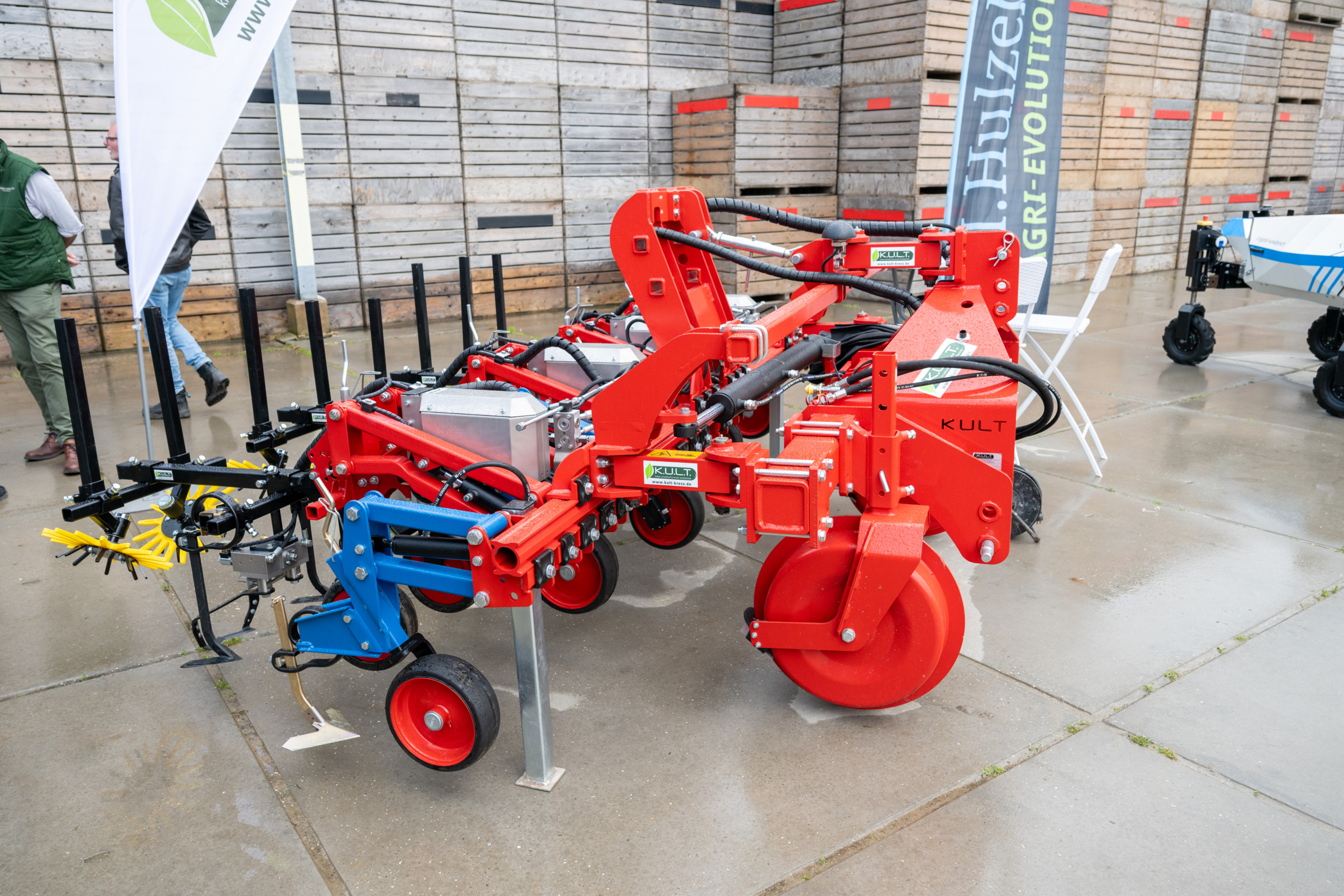

Alongside the iSelect hoeing machine, Dutch KULT-Kress importer Agri Evolution now also offers the KULT iScan hoe for in-row hoeing. The hoeing technique of both machines is similar, but the camera technology used differs significantly.
The main difference between the iSelect hoeing machine and the iScan hoe from the German hoeing machine manufacturer KULT-Kress is the camera system. The cameras on the KULT-Kress iSelect (from Tillett & Hague) measure the leaf surface area.
This works well in all crops that are planted, such as lettuce, leafy vegetables, and brassicas (cabbage types). As long as the crop is planted at a certain distance, it has a developmental advantage over the germinating weeds.
In crops that are sown, this advantage over the weeds is (often) not present. There is insufficient difference between the leaf surface area of the crop and the weeds, so the cameras cannot detect a significant difference.
Text continues below picture

Ullmann camera technology with AI
“With the KULT-Kress iScan, you specify which crop you will be hoeing. You scan that crop with the cameras – from Ullmann – to hoe all the weeds around the plant. Even with high weed pressure, we can still hoe 80 to 90% of the weeds in the row,” explains Marten Hulzebos, owner-director of Agri Evolution.
The Ullmann camera technology recognizes the center of each cultivated plant using a 2D camera and AI (artificial intelligence). A 3D camera determines the height of the plants and the distance to the ground.
Text continues below picture

AI technology adapts to new crops
Thanks to artificial intelligence, the technology can also adapt to a new crop. Hulzebos states, “The more data we have, the smarter the software becomes.” Since each crop row is individually viewed and assessed by its own camera, the hoe is also well adaptable to different row spacings according to Hulzebos.
A limiting factor is currently the width of the element in which the camera is embedded. This results in a minimum row spacing of 35 centimeters. The maximum row spacing is 1 to even 1.5 meters.
The hoeing blades move hydraulically in and out of the row. In combination with the side shift, an oil flow of 20 l/min is sufficient. Electric operation is also possible, but hydraulic is faster, stronger, and more cost-effective according to Hulzebos. With a throttle, you determine the aggressiveness of the movement of the hoeing blades.
A 4-row KULT-Kress iScan hoe, including finger weeders, is available starting from €125,000.
link







